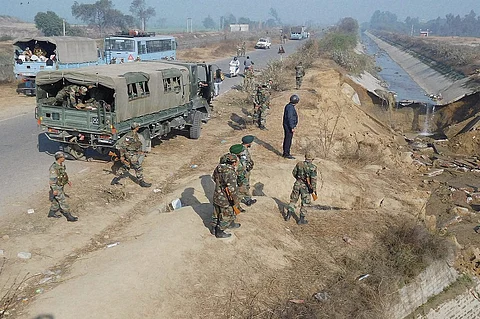

After days of stalemate, the Indian army has taken control of the water supply to the capital New Delhi. The canal had been damaged by protesters from the Jat caste, who are demanding they be added to the list of castes eligible for reserved government jobs.
So far, 19 people are confirmed to have died in the protests. Freight trains and buses were set on fire, as were at least seven railway stations, and hundreds of people had to flee their homes.
These shocking protests have come from a seemingly unlikely source. The Jats of north India are traditionally a farming community. In the state of Haryana, where the protests are concentrated, Jats are the dominant landowning caste. Since independence, they have been able to use their dominance over the ownership of land to wield influence in politics and other sectors of the economy; today, they are without doubt the single most powerful community in the state.
So why then are the Jats asking for reservations in public sector jobs, usually a form of positive discrimination reserved for the socially and economically disadvantaged castes?
Left behind
The Jats of Haryana have been hit hard by the decline of agriculture both as a source of income and as a source of social status in the last two decades – and they are only the most recent farming community that has agitated for reservations. The Patidars in Gujarat and the Kapus in Andhra Pradesh have adopted a similar strategy in the last few months. The Marathas in Maharashtra might be next – especially if the government of Haryana grants reservations to the Jats, which it seems inclined to do.
After more than 20 years of economic stagnation, India’s agricultural sector, which still employs the majority of the population, is in crisis. Sluggish growth, increasing competition from abroad and fragmentation of landholdings across generations – the average size of a field shrunk by over 60% in the last four decades – have left a trail of extreme rural distress throughout the country. The suicides of nearly 300,000 farmers in the last two decades are some indication of the depth of despair.
Farming castes, then, have gradually seen their economic and social status declining. In many cases, the most dynamic sections of the community have expanded their economic interests outside agriculture. The Jats of Haryana are an example, and they now dominate other sectors of the economy as well. However, the shift towards the urban sectors of the economy does not involve the totality or even the majority of the community.
Going nowhere: Jat protesters in New Delhi. EPA/Rajat Gupta
This is all compounded by the Indian economy’s failure to generate enough jobs for one of the fastest-growing working-age populations in the world.
Jobless growth
Between 2004 and 2009, only 25m jobs in total were created in non-agricultural sectors – this against an estimated need of 17m jobs a year. Although there are some signs of improvement, the Indian economy is still unable to generate enough work, especially in the formal sector – that is, formally listed organisations that pay tax – which employs just 7% of the country’s workforce.
This jobless growth makes it extremely difficult for young people to board the train of India’s economic miracle. Especially for those belonging to dominant communities such as the Jats, being left behind is something hardly easy to stomach.
To make things worse, Haryana has one of the most unequal sex ratios in the country, with only 879 women per 1,000 men – it is increasingly difficult for young men to find a bride. In some north Indian states, women are literally imported from other parts of the country to meet the demand for brides. It is clear then that, in a context where the overwhelming majority of marriages are arranged, families prefer to marry their daughters to men employed in the formal economy.
The declining status of agriculture is making this more difficult for the Jats and other farming communities. The fact that people from other castes, even ones lower in the hierarchy, have government jobs and can marry more easily is, again, not easy to stomach.
It seems the government of Haryana will agree to the Jats’ demands, but that will hardly mean the end of economic caste conflicts. Other farming castes throughout the country will feel discriminated against and might well resort to protests of their own. And as per a Supreme Court order, no more than 50% of the available jobs can be reserved for particular groups. Therefore, including an additional community means eroding the available jobs for those who already are on the list.
Haryana’s Ahirs, Gujjars and Lodhas are on the warpath. The Indian government should be very careful before opening the Pandora’s box of job reservations once again.
Diego Maiorano, Leverhulme Early Career Fellow, School of Politics and International Relations, University of Nottingham
This article was originally published on The Conversation. Read the original article.